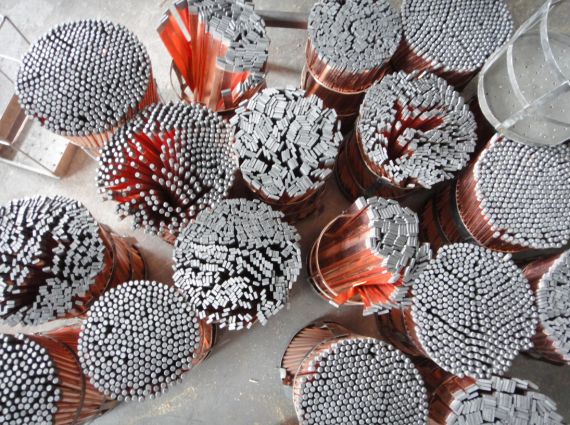The relationship between compressed air pressure and carbon rod consumption rate: How to balance efficiency and economy?
There is a certain relationship between compressed air pressure and carbon rod consumption rate. Generally speaking, the greater the compressed air pressure, the higher the carbon rod consumption rate. This is because a larger air pressure can blow away the molten metal more forcefully, but at the same time it will also subject the carbon rod end to greater impact and friction, accelerating the wear of the carbon rod. To balance efficiency and economy, the following aspects can be considered:
Choose the appropriate pressure according to material and process requirements
For different metal materials and planing processes, the required compressed air pressure is different. For example, when planing thicker and harder metals, a larger pressure is required to effectively blow away the molten metal to ensure planing efficiency, but at this time the carbon rod consumption will also increase accordingly. For thinner and less hard metals, lower pressures usually meet the requirements and reduce carbon rod consumption. Taking stainless steel as an example, when planing thick plates with deep grooves, it may be necessary to adjust the compressed air pressure to 0.5 - 0.6MPa to ensure planing quality and efficiency; when performing shallow cleaning of thin plates, a pressure of 0.3 - 0.4MPa is often sufficient, which can achieve the cleaning purpose and reduce carbon rod wear.
Adjust the pressure according to the specific gouging process, such as gouging depth, width and other requirements. If you need to gouging deeper and wider grooves, you need to increase the pressure appropriately to ensure that the molten metal can be blown away in time to avoid slag accumulation, but you need to pay attention to controlling the pressure increase to avoid excessive consumption of carbon rods.
Optimize operating parameters
Reasonably adjust the carbon rod diameter and current. Generally speaking, carbon rods with larger diameters can withstand greater currents. Under the same compressed air pressure, the gouging efficiency can be improved while the consumption rate of carbon rods can be relatively reduced. Because the end area of carbon rods with larger diameters is larger, the air impact force per unit area is relatively small, the wear is relatively uniform, and the consumption is relatively slow. For example, when performing the same gouging task, the consumption rate of a carbon rod with a diameter of 8mm may be lower than that of a carbon rod with a diameter of 6mm under the same pressure. At the same time, it is necessary to select the appropriate current according to the diameter of the carbon rod. Too large a current will not only increase the consumption of the carbon rod, but also may cause arc instability and affect the gouging quality; too small a current will reduce the gouging efficiency. Usually, for a 6mm carbon rod, the current can be selected between 300-400A; for an 8mm carbon rod, the current can be around 400-500A.
Control the planing speed. If the planing speed is too fast, the molten metal may not be fully blown away, affecting the planing quality, and will also increase the wear of the carbon rod per unit time; if the planing speed is too slow, the exposure time of the carbon rod at high temperature will increase, resulting in an increase in the carbon rod consumption rate. Generally speaking, under the premise of ensuring the planing quality, appropriately increasing the planing speed can reduce the carbon rod consumption rate to a certain extent. For example, when air planing low-carbon steel with a thickness of 10mm is carried out, the planing speed can be controlled at around 40-60mm/min.
Regularly maintain and inspect equipment
Ensure the normal operation of the compressed air system, and regularly check the air compressor, pipelines, valves and other components to prevent problems such as air leakage and unstable pressure. If there is a leak in the compressed air system, the actual pressure reaching the gouging gun will be insufficient. In order to achieve the same gouging effect, the operator may unconsciously increase the pressure, thereby increasing the carbon rod consumption. At the same time, unstable pressure will also cause uneven wear of the carbon rod and increase the consumption rate.
Regularly check the nozzle of the gouging gun. If it is worn or blocked, it should be replaced or cleaned in time. The state of the nozzle will affect the ejection effect of the compressed air. If the nozzle is severely worn, the air flow will become uneven and cannot effectively blow away the molten metal. It will also cause the end of the carbon rod to be impacted by abnormal airflow, accelerating the consumption of the carbon rod.
Through the above methods, the relationship between the compressed air pressure and the carbon rod consumption rate can be balanced to a certain extent, while ensuring the efficiency of gouging, reducing the consumption of carbon rods and improving economy.

Contact: admin
Phone: +86-13665233012
E-mail: service@weldmaterial.com
Add: Huanghua Industrial park, Jiangdu City, Yangzhou , Jiangsu Provicne, China.